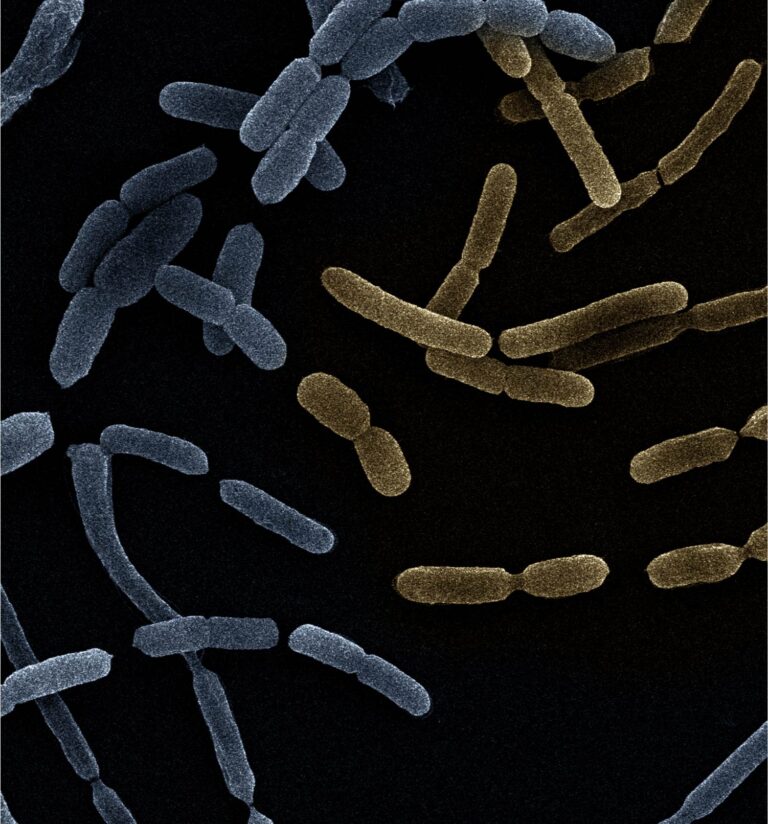Plant growth promoting bacteria (PGPB) are microorganisms present in the rhizosphere of healthy plants.

PGPB Bacteria as a biofertilizer
The use of these bacteria contributes to the reduction of the use of phosphoric and ferric fertilizers, alleviating the pressure on these limited natural resources and avoiding the contamination of water that could derive from their excessive use.
How does beneficial Bacteria work?
It is an indispensable for agriculture:

Phosphorus solubilization
occurs through the secretion of acid phosphatase and phytase enzymes.
Iron uptake
through siderophores that reduce Fe3+ to Fe2+ making it bioavailable for microorganisms and crops.
Benefits
Optimizes the use of phosphorus and iron fertilizers
Solubilizes phosphorus, a scarce natural resource, immobilized due to salinity conditions or soil pH (>7.5) Unblocks iron and fights against iron chlorosis in conditions of high redox potential and pH. It improves the phosphorus-iron interaction, generally discordant: the minimum solubility of iron is between pH 7.5 and 8.5, coinciding with the edaphic conditions that inhibit phosphorus.
Increases production (kg / ha).
Better access to nutrients allows for higher crop growth.
Own production technology
Atens bacteria are produced by their own method in liquid medium fermenters.
This bioprocess guarantees:
• The complete sporulation of the cells and the conservation of their metabolites.
• Maximum vitality of bacteria maintaining richness.
• Greater stability and microbiological concentration.
PGPB Bacteria. Metagenomics and metabolomics
Atens PGPBs have demonstrated their promoting effect on the physiological processes of plants even during seed germination.
Metabolomics analysis
Metabolomic analyses by Atens's laboratory, NGAlab, using corn and soybean seeds corroborated phenotypic measurements indicating earlier germination after 8 days. These results highlighted how the seedlings of the seeds treated with bacteria showed a more accelerated metabolism for the production of dipeptides, indicative of the degradation and use of reserve proteins. In addition, an increase in antioxidants such as anthocyanins and purine nucleosides has been seen in these seedlings, related not only to increased cell division but also to better nitrogen availability.
Related products:
Bactrium
Bacteria
Rhizosphere bacteria with a promoting effect on plant growth and biostimulant. Bactrium is a product...
Learn more
FAQS Atens. Any questions?
What is the origin of the Atens bacteria?
The bacteria produced in Atens have been isolated from the inoculum of mycorrhizae that reproduce in vivo in our greenhouses. From the population of bacteria accompanying the mycorrhizae, 276 PGPB were identified by combining microbiological analysis of cultures and high-throughput metagenomic sequencing. From this heterotrophic bacterial community that includes 165 families, 107 orders and 23 phyla, 14 strains were studied and 2 were selected by the Atens laboratory. This finding of PBPBs associated with our mycorrhizae, as well as the characterization of the bacteria, gave rise to a scientific article published by Frontiers in Plant Science (DOI=10.3389/fpls.2018.01956).
Is it compatible with other microorganisms?
Also called Mycorrhizal Helper Bacteria (MHB), Atens' PGPBs enhance mycorrhization, stimulating spore germination and facilitating root colonization through the production of pectolytic enzymes. Combined with mycorrhizae, Atens bacteria produce: More than 126% increase in the rate of mycorrhization It potentiates up to 4 times the sporulation of mycorrhizae Promoting cell division causes up to 90% more nucleotide synthesis.
What advantages do Atens bacteria have when reproduced in liquid format, this being the same state as the final product?
The bacterial strains in this product were isolated by Atens Laboratories and are reproduced in a liquid fermenter to their full potential. In a final phase of growth, when the medium is completely consumed, sporulation of the cells is promoted. It is precisely these same spores that are found in the final formulation of the product together with the metabolites produced during their growth. The bioprocess for obtaining the final formulation does not require the passage of the microorganisms to a solid state, ensuring the maximum vitality of the bacteria, which have not undergone filtering or lyophilization that compromise their viability.
How much fertilizer can be saved by using these bacteria?
Atens bacteria contribute to a better use of agricultural inputs, especially phosphorous ones, by mobilizing the phosphorus applied in previous campaigns and locked in the soil, making it bioavailable for crops. Phosphorous fertilizer savings can vary depending on soil conditions from 20% to 50% in certain cases. It must be specified that as a biostimulant it promotes plant assimilation processes without providing nutrient content with the aim of improving the characteristics of the plant and the plant rhizosphere. Certainly, a significant amount of phosphorous fertilizer can be saved, but it is advisable to know the nutritional status of the soil through a prior analysis. In this way, determining the exact reserve of phosphorus contained in the soil will allow us to be precise in the management of this nutrient each campaign.
What is it that differentiates bacteria from Atens?
Atens combines an exhaustive strain selection process with its own technology to reproduce microorganisms. In the case of bacteria, industrial production has been optimized thanks to the response surface methodology. This innovative development has allowed us to consider all the parameters of our bioreactor in the liquid state such as pH, dissolved oxygen and agitation regime to regulate the growth of bacteria and the transition to viable spores.
